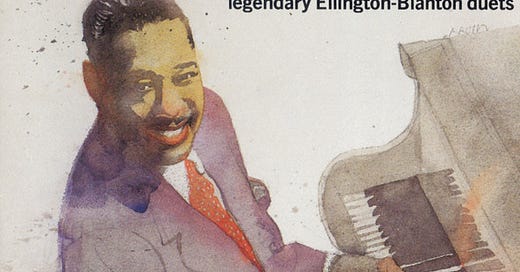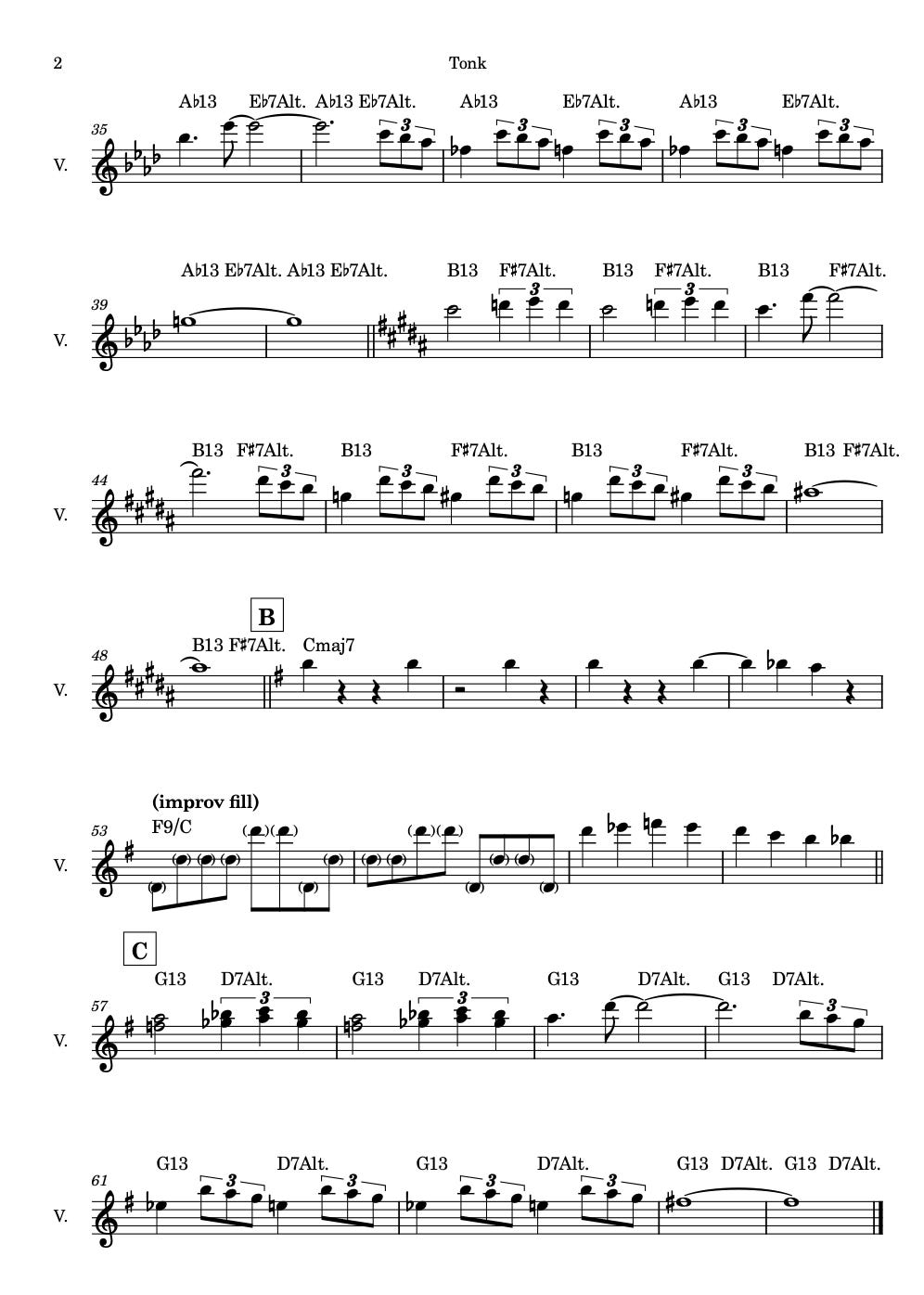Fred Hersch was the first person who told me about “Tonk.” He recorded it with Nurit Tilles on his landmark Billy Strayhorn CD Passion Flower, and then I played it with Fred in concert once at Merkin Hall in the mid-1990s. Around that time I acquired the RCA Bluebird issue of Duke Ellington: Solos, Duets, and Trios, which opens with the 1946 recording of “Tonk.”
Another version from 1950 on is Great Times!
There is quite a lot about the background of “Tonk” in Walter Van de Leur’s book Something to Live For. According to Van de Leur, Strayhorn wrote “Tonk” for the full Ellington band as a quasi-piano concerto for Duke in 1940. That arrangement was never recorded, but the composition became kind of a party piece for Ellington and Strayhorn to play together. (I don’t have the book in front of me, but I believe that while the composer credit is listed as “Ellington/Strayhorn” on both recordings, in this case it really was mainly a Strayhorn piece…although Duke does plenty of things in the lower part of the piano that could never have been written down, and thus straight from Duke’s imagination.)
Strayhorn loved George Gershwin and other glamorous musical theater composers. You can hear that side of Strayhorn in “Tonk.” In addition, a piano duet has its own fancy language, and “Tonk” definitely honors the ornamental aspects of the idiom.
Indeed, while there’s a certain amount of bluesy “grit” exhibited by the master pianists in the duet recordings, the work itself is not really serious jazz, it is more like a wonderful novelty number. After the cabaret surface is accepted and digested, it turns out that some of the harmonies are quite dissonant and unresolved: at times recalling Stravinsky, at others foreshadowing Thelonious Monk.
Certainly it is not like anything else in the discography. If I didn’t already know what it was, I’d never guess “Tonk” was an Ellington track in a blindfold test.
There are written out transcriptions of “Tonk” floating around, but I have never seen something more suitable for quickly putting the piece together in a context for improvisers — namely, a lead sheet.
At the end of the month I’ll be accompanying Christian Tamburr on marimba for a version of “Tonk” as part of Duke Ellington: From Stride to Strings, the program at the Grange Festival curated by Piers Playfair. (See my essay, “Orchestrating Ellington.”)
My basic chart is not entirely correct or complete. However, it is a friendly starting point, a cheat sheet for Christian and I to fill with (hopefully) graceful inspiration. If Strayhorn saw this crib, I think he’d recognize his piece.
There are divergent details in the 1946 vs. the 1950 recordings; Christian will be free to do whatever he wants.
Then there’s the problem of the concluding bars. I’m not quite convinced about the matter-of-fact ending of either recorded version, so we will see if Christian has any good ideas….






Great piece, as usual. Small story: 30 years ago or so, Dick Hyman asked me to play TONK with him at a 92nd St. Y concert (I had a septet playing small group Ellington on the bill). I told him there was no way I could play all the notes in the transcription he gave me, so he rewrote the parts, played his part and half of mine! You're spot on its "party piece" nature - the other Duke/Billy duets veer off into other spaces. BTW, there is a Strayhorn score for TONK at the Library of Congress.
The 1946 duet version reminds me a bit of Fats Waller...delightful "rent party" music!! Have fun playing it, Ethan!!